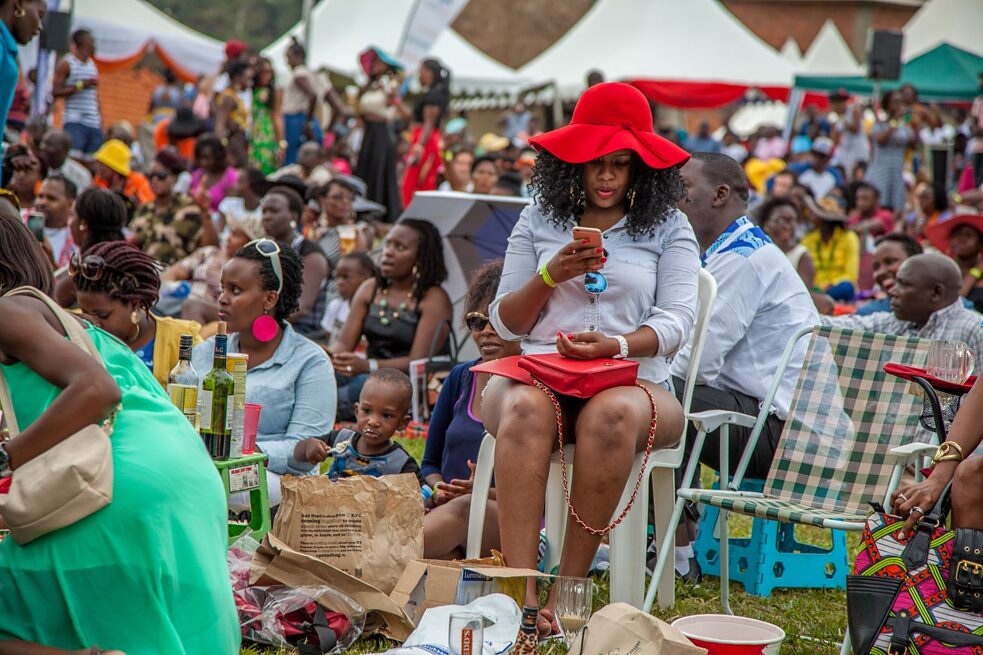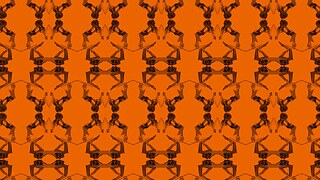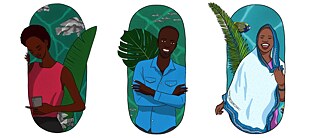What does the future of feminist AI look like?
Governments across Africa are rapidly adopting novel, emerging technologies. These platforms are often procured from foreign vendors under murky procurement contracting. As the continent grapples with this foreign AI invasion, feminist movements must mobilize to ensure an inclusive and ethical digital future.
Data, and systems dependent on this data, have become indispensable tools to challenge power and create social impact in communities. However, oftentimes, marginalized communities are excluded from the design processes that guide how this data will be used (and abused).
Data is vital for understanding, planning and measuring causes. However, data informs not only movements, but also the technologies that organize digital spaces and increasingly the algorithms that now impact our lives. Data is created, processed and interpreted under unequal power relations, and in turn, will continue to reproduce the same oppressive and discriminatory norms that already exist in today’s societies, whether we are talking about colonialism, racism, classism, patriarchy and so on.
For true data justice, these masses of ever growing data must be translated into inclusive data practices, while at the same time fully acknowledging the potential digital violence evident in data production, namely potential for abuse, potential for epistemic violence and potential for algorithmic discrimination.
Ruha Benjamin, in her book, Race after Technology, talks about how technology is disguised as objective under the veil of historical prejudices, biases, and inequalities to control black and brown bodies. She gives an example of an initiative called Beauty AI, the first ever beauty contest judged by robots. Unsurprisingly, despite using “the most advanced machine-learning technology” almost all of the 44 winners across various categories were white. As Ruha puts it, “Beauty, in short, is in the trained eye of the algorithm.” While this is a trivial example, the book goes on to mention much more nefarious uses of such software in policing, incarceration, and the provision of social benefits. African nations are rapidly adopting new technologies, but at what cost?
| Photo credit: Slim Emcee / Unsplash
African nations are rapidly adopting new technologies, but at what cost?
| Photo credit: Slim Emcee / Unsplash
More specifically, African feminists understand and assume the responsibility towards striving for just and equal societies. Feminist and women’s rights movements across Africa differ significantly from mainstream Western/Northern movements. Engaging with African feminist thinking, there are many African feminisms and regions within the continent that may have localized frameworks while at the same time sharing many commonalities. Considering intersectionality, and sharing this concept with other feminist theoretical frameworks, it is important to understand how law, tradition, force, ritual, customs, education, language and labour are used to shape both offline and digital spaces under the guise of patriarchy.
However, art and love are viewed within African feminism as radically transformative acts. As Minna Salami states in her piece, 7 key issues in African feminist thought, “African feminist thought is fuelled by the idea that love and justice are complementary to revolution and change. It is focused on healing, reconciliation, and on an insistence that the language of African womanhood, from its global position, is the language that can transform society into one where sexual, racial, spiritual, psychological and social equality are afforded.” Art has the capability of transcending the jargon and bringing AI governance to the forefront of our attention.
In 2019, my organization, Pollicy received a Creative Media Award from internet applications brand Mozilla which sought to promote art and advocacy projects that illuminate the role AI plays in spreading misinformation. As part of this award, we created and launched a Choose-Your-Own-Adventure style game that allows users to play as one of three characters from East Africa. Players can navigate and scrutinize misinformation and fake news through the choices that they make for their characters. Mozilla has since doubled down on their efforts and recently launched the 2020 Creative Media Awards aimed at technologists, artists, and media producers who can highlight how AI intersects with online media and truth and its impacts through the lens of the Black experience. Pollicy has created a web-based game called "Choose Your Own Fake News"
| Copyright: @neemascribbles
Pollicy has created a web-based game called "Choose Your Own Fake News"
| Copyright: @neemascribbles
Governments across Africa are rapidly adopting novel, emerging technologies. These platforms are often procured from foreign vendors under murky procurement contracting and with little to no transparency in how the algorithms work and how they will be used in the future. In her paper titled Algorithmic Colonization of Africa, Abeba Birhane presents numerous examples which illustrate how the rapid growth of AI interventions across Africa echoes colonial era exploitation. Some of the examples mentioned include facial recognition systems in Zimbabwe and Uganda, predatory microlending services in Kenya and discriminatory national biometric identification systems cropped up across the continent.
There is growing consensus on the need for data to more accurately determine the agendas of women and other marginalized groups, as well as to fight the hostility towards the demands of feminism. This is particularly relevant in how governments and development cooperation partners respond to the COVID-19 pandemic and will ultimately determine how health, social and psychosocial support is designed and delivered to women and other vulnerable groups. There is an urgent need to promote critical discourse around AI systems amongst feminist organizations and women’s groups in Africa so as to spur a proactive rather than reactive approach, and to develop frameworks for governance AI implementation in ways that are gender-inclusive, and centered on care and safety. Neema Iyer
| © Neema Iyer
Neema Iyer
| © Neema Iyer
There is an immense opportunity for feminist movements to work at the intersection of gender, technology, research and art to highlight the growing impact of AI in our daily lives. While issues of AI governance are often left to the technologists, feminist contributions are necessary to ensure that we can collaboratively create inclusive and ethical digital futures, where all groups are welcomed at the table to end discriminatory and harmful practices traditionally embedded into software. We must be empowered to ask the right questions and think critically about what the future under different AI and data governance models can look like today, tomorrow and in the distant future.
Learn more about Neema Iyer's views on the future of creative AI here.
Data is vital for understanding, planning and measuring causes. However, data informs not only movements, but also the technologies that organize digital spaces and increasingly the algorithms that now impact our lives. Data is created, processed and interpreted under unequal power relations, and in turn, will continue to reproduce the same oppressive and discriminatory norms that already exist in today’s societies, whether we are talking about colonialism, racism, classism, patriarchy and so on.
For true data justice, these masses of ever growing data must be translated into inclusive data practices, while at the same time fully acknowledging the potential digital violence evident in data production, namely potential for abuse, potential for epistemic violence and potential for algorithmic discrimination.
Ruha Benjamin, in her book, Race after Technology, talks about how technology is disguised as objective under the veil of historical prejudices, biases, and inequalities to control black and brown bodies. She gives an example of an initiative called Beauty AI, the first ever beauty contest judged by robots. Unsurprisingly, despite using “the most advanced machine-learning technology” almost all of the 44 winners across various categories were white. As Ruha puts it, “Beauty, in short, is in the trained eye of the algorithm.” While this is a trivial example, the book goes on to mention much more nefarious uses of such software in policing, incarceration, and the provision of social benefits.
 African nations are rapidly adopting new technologies, but at what cost?
| Photo credit: Slim Emcee / Unsplash
African nations are rapidly adopting new technologies, but at what cost?
| Photo credit: Slim Emcee / Unsplash
African feminism, technology and the role of art
Feminist scholars contend that when studying technology and gender, it is essential to note that technology and gender are not mutually exclusive but “co-produced.” Technology and gender relations do not exist in a vacuum: technology is shaped by the environment it exists in; the social structures that dictate gender relations also govern technology. Moreover, this relationship of co-production is continuously changing each other, and this process does not stop just with the production of technology but extends to the design, the use of technology and the content it provides. Therefore, technology and gender dynamically influence each other.More specifically, African feminists understand and assume the responsibility towards striving for just and equal societies. Feminist and women’s rights movements across Africa differ significantly from mainstream Western/Northern movements. Engaging with African feminist thinking, there are many African feminisms and regions within the continent that may have localized frameworks while at the same time sharing many commonalities. Considering intersectionality, and sharing this concept with other feminist theoretical frameworks, it is important to understand how law, tradition, force, ritual, customs, education, language and labour are used to shape both offline and digital spaces under the guise of patriarchy.
However, art and love are viewed within African feminism as radically transformative acts. As Minna Salami states in her piece, 7 key issues in African feminist thought, “African feminist thought is fuelled by the idea that love and justice are complementary to revolution and change. It is focused on healing, reconciliation, and on an insistence that the language of African womanhood, from its global position, is the language that can transform society into one where sexual, racial, spiritual, psychological and social equality are afforded.” Art has the capability of transcending the jargon and bringing AI governance to the forefront of our attention.
In 2019, my organization, Pollicy received a Creative Media Award from internet applications brand Mozilla which sought to promote art and advocacy projects that illuminate the role AI plays in spreading misinformation. As part of this award, we created and launched a Choose-Your-Own-Adventure style game that allows users to play as one of three characters from East Africa. Players can navigate and scrutinize misinformation and fake news through the choices that they make for their characters. Mozilla has since doubled down on their efforts and recently launched the 2020 Creative Media Awards aimed at technologists, artists, and media producers who can highlight how AI intersects with online media and truth and its impacts through the lens of the Black experience.
 Pollicy has created a web-based game called "Choose Your Own Fake News"
| Copyright: @neemascribbles
Pollicy has created a web-based game called "Choose Your Own Fake News"
| Copyright: @neemascribbles
Data justice and transparency
Governments across Africa are rapidly adopting novel, emerging technologies. These platforms are often procured from foreign vendors under murky procurement contracting and with little to no transparency in how the algorithms work and how they will be used in the future. In her paper titled Algorithmic Colonization of Africa, Abeba Birhane presents numerous examples which illustrate how the rapid growth of AI interventions across Africa echoes colonial era exploitation. Some of the examples mentioned include facial recognition systems in Zimbabwe and Uganda, predatory microlending services in Kenya and discriminatory national biometric identification systems cropped up across the continent.
There is growing consensus on the need for data to more accurately determine the agendas of women and other marginalized groups, as well as to fight the hostility towards the demands of feminism. This is particularly relevant in how governments and development cooperation partners respond to the COVID-19 pandemic and will ultimately determine how health, social and psychosocial support is designed and delivered to women and other vulnerable groups. There is an urgent need to promote critical discourse around AI systems amongst feminist organizations and women’s groups in Africa so as to spur a proactive rather than reactive approach, and to develop frameworks for governance AI implementation in ways that are gender-inclusive, and centered on care and safety.
 Neema Iyer
| © Neema Iyer
Neema Iyer
| © Neema Iyer
There is an immense opportunity for feminist movements to work at the intersection of gender, technology, research and art to highlight the growing impact of AI in our daily lives. While issues of AI governance are often left to the technologists, feminist contributions are necessary to ensure that we can collaboratively create inclusive and ethical digital futures, where all groups are welcomed at the table to end discriminatory and harmful practices traditionally embedded into software. We must be empowered to ask the right questions and think critically about what the future under different AI and data governance models can look like today, tomorrow and in the distant future.
Learn more about Neema Iyer's views on the future of creative AI here.

